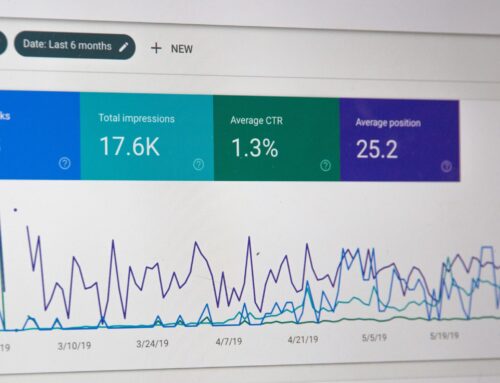
Sue sits down in her manager’s office for her annual review meeting. Gary is new to the division and he’s never reviewed her before, so she doesn’t know what to expect.
The company has a review template, but no rubrics. He welcomes her, asks for her self-assessment sheet, and then they look over the scores he gave her. Sue is shocked. Nothing “Exceeds Expectations” and more items are “Below Expectations” than she’s ever seen before. Trying to figure out what happened, Sue asks Gary for more details. How is she falling short?
“You’re doing a pretty good job,” he tells her. “But I have high expectations. I expect my direct reports to do everything to the highest degree of excellence. Since there’s nothing better than that, there’s no such thing as ‘Exceeds Expectations’ as far as I’m concerned. I’m sure you understand.”
“Yes, I do,” Sue lies, “So, what can I do to meet expectations then?”
Gary looks at her blankly, as if the answer is the most obvious thing in the world. “I just told you. Do everything to the highest degree of excellence.”
Without defined rubrics, performance assessments are very subjective. What “Meets Expectations” for one person won’t meet them for others. This isn’t only true for annual reviews. It’s the case whenever someone evaluates job performance.
What Are Rubrics?
At its most basic, a rubric is a list of criteria. Whether or not an individual meets those criteria determines how well they’re scored. To be clear, a rubric isn’t just a score. They’re often shown as a grid, with the criteria and matching scores listed together. In Sue’s case, the possible scores were “Exceeds Expectations,” “Meets Expectations,” and “Below Expectations.” Without a rubric for her review, Gary only had scores. And those scores didn’t have any criteria.
Let’s say that Sue works in online marketing. Here are a few examples of criteria (with matching scores) that would have made sense on a rubric for assessing her job performance:
|
Exceeds Expectations |
Meets Expectations |
Below Expectations |
|
|
Time Management |
Assignments are completed early |
Assignments are completed on time |
Assignments are completed late or are not completed |
|
Search Engine Optimization (SEO) |
The parts of the site the employee is responsible for have an average SEO score of “A” |
The parts of the site the employee is responsible for have an average SEO score of “B” |
The parts of the site the employee is responsible for have an average SEO score at or below “C” |
|
Social Media Content |
The employee posts more than one new piece of content and shares more than one pre-existing piece content through each social media outlet every day |
The employee posts one new piece of content and shares one pre-existing piece of content through each social media outlet every day |
The employee does not post new content and share pre-existing content through each social media outlet every day |
Rubrics Create Measurable Consistency
Well-designed rubrics have clear, easy to measure criteria. They shouldn’t leave any room for interpretation. That way everyone’s evaluations use the same standard. People with the same scores are performing at the same level. Gary may have high standards, but that won’t affect the review results if he’s required to use a company rubric. “Meets Expectations” would mean the same thing in his reviews as it did when his predecessor reviewed Sue. The key performance review goals are to gauge where people are and to give them actionable steps for improvement. Rubrics’ specifics do a great job in both areas, and they can help direct constructive feedback.
That said, rubrics and their criteria shouldn’t be set in stone. They need to be “living documents” that are updated as the organization’s needs and expectations change. For instance, if Sue’s company decides to put more emphasis on SEO scores, they might adjust the criteria for that part of the rubric. That update might look something like this:
| Exceeds Expectations | Meets Expectations | Below Expectations | |
| Search Engine Optimization (SEO) | The parts of the site the employee is responsible for all have an SEO score of “A (100%)” | The parts of the site the employee is responsible for have an average SEO score of “A” | The parts of the site the employee is responsible for have an average SEO score at or below “B” |
So, the criteria may change over time but the way they’re tracked remains consistent.
Rubrics as Task Checklists
 Rubrics aren’t just for “big” performance assessments. They can also be used for guidance and assessment on individual tasks. For example, Sue’s marketing department may have a rubric for how they want employees to handle SEO. It would essentially work like a detailed checklist. The rubric would have the different requirements listed as criteria. It might have the desired word count, preferred keywords, meta tags, etc. Even if it’s informal, it can still be used as an objective baseline for performance measurement.
Rubrics aren’t just for “big” performance assessments. They can also be used for guidance and assessment on individual tasks. For example, Sue’s marketing department may have a rubric for how they want employees to handle SEO. It would essentially work like a detailed checklist. The rubric would have the different requirements listed as criteria. It might have the desired word count, preferred keywords, meta tags, etc. Even if it’s informal, it can still be used as an objective baseline for performance measurement.
Sue’s review would probably have been very different if Gary had used a rubric. Her scores would have been based on criteria, rather than his personal opinions. Using rubrics to assess job performance can be very helpful. They create measurable consistency both over time and between evaluators. They can also help facilitate constructive feedback and provide actionable next steps for improvement.
If you want to know more about how rubrics can help you, contact us today.
For more industry-focused articles like this, subscribe to our free monthly newsletter, Smarter…Faster!




